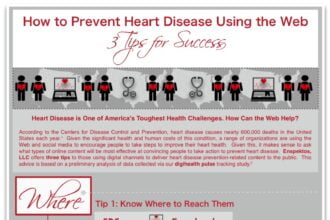Birth injuries refer to the damages suffered by babies before, during, or after delivery. Also referred to as birth traumas, these may come in a number of forms, but majority of them are minor and can be resolved over time. However, more serious birth injuries could lead to lasting damages. Birth injuries often include nerve damage, or brain, muscle, or bone damage, or may even lead to death.
If your child had birth injuries, there is somebody or multiple parties who may be at fault, which might include medical professionals you trusted to make the right decision concerning your labor and pregnancy.
If you want to learn more about birth injuries, here are some of those that might occur when giving birth:
Cerebral Palsy
The leading brain-related birth injury is cerebral palsy. It may develop after an infant stroke, maternal infections, oxygen deprivation, or an infant infection. In some cases, cerebral palsy can be eliminated through corrective preventative measures by doctors. For instance, if physicians have failed to monitor fetal distress and take some appropriate actions, the baby may develop cerebral palsy. This can be considered as medical negligence.
Brachial Plexus
It occurs when the upper extremity of an infant’s arm is injured. It usually happens during delivery. The symptoms include inability to use particular muscles of the affected arm and weakness. The hands and shoulders are also affected. A burning sensation and electrical-type shocks are common.
Erb’s Palsy
It’s a kind of brachial plexus marked by the upper arm’s nerves being affected, typically after a birth injury. Babies with Erb’s palsy can experience weakness and loss of feeling. In serious cases, babies may suffer from total paralysis.
Shoulder Dystocia
It’s a delivery and labor complication that occurs when the shoulders and head of an infant get trapped behind the pelvic bone of the mother during delivery. Even if shoulder dystocia rarely happens, complications that may arise with this kind of injury can be serious. With the risk of uterine rupture and maternal hemorrhaging, babies may experience difficulty when breathing, brachial plexus fracture, cerebral palsy, and collarbone fracture.
Klumpke’s Palsy
Another type of brachial plexus is Klumpke’s palsy, which is due to the damage in the arm’s lower nerves, which affects the fingers, arm, and wrists. Usually, infants with Klumpke’s palsy suffer from total paralysis in the affected arm, and the hand typically takes on a claw-like permanent shape.
Skull Fracture
The pressure put on the baby’s head by the doctor and the instruments used during delivery may cause a fracture. The forces from the mother’s pelvic bones and birth canal may sometimes cause one as well. Luckily, the majority of these fractures aren’t that severe and can be healed with time without causing other complications.
Fractures can also occur with some kinds of brain injuries in babies, like cephalohematoma, which is bleeding under the skull. If hematoma happens, the doctor needs to drain the fluid from the brain of the baby to prevent damage from the fluid’s pressure.
Birth Injuries To Mothers
Thanks to the countless innovations in the field of medicine, permanent birth injuries have now become rare. But, a doctor’s negligence during the delivery can cause the mother serious nerve damage that may result in wrongful birth. Moreover, there are times when the mistake of an obstetric during labor can cause an irreversible harm to the mother.
Some of the injuries that mothers may experience when giving birth include the following:
- Perineal Tear – If episiotomy is done negligently, it can result in serious perineal injury. Vagina’s superficial tearing is common when giving birth, which causes temporary and minor problems. However, fourth or third degree perineal tears may lead to muscle damage and devastating nerve damage. In some serious cases, tears may penetrate one’s anal sphincter, which causes pain, numbness, incontinence, and sexual dysfunction.
- Pelvic Floor Damage – If the baby is too big for the mother, excessive pressure may overstretch the muscles of the pelvic floor and genital tract. Because of this, women may suffer from genital prolapse, which is a condition wherein the vaginal canal protrudes from the opening of the vagina.
- Lumbosacral Plexus Injury – During a vaginal birth or C-section, if there is an improperly placed epidural, it can result in lumbosacral plexus injury. Basically, lumbosacral plexus is a network of nerves that controls sensation and movement in the legs. Damage to such nerves may cause numbness, weakness, or burning, tingling, or stabbing pain.
Bottom Line
Birth injuries may range from temporary and mild to fatal. Luckily, the majority of birth injuries are not fatal and don’t cause lifelong and serious complications. However, if your child suffers from a preventable birth injury, you and your little one deserve legal compensation, especially if the birth injury requires lifelong treatments. In this case, hiring a lawyer who is knowledgeable with cases related to birth injuries can help you fight for justice.










